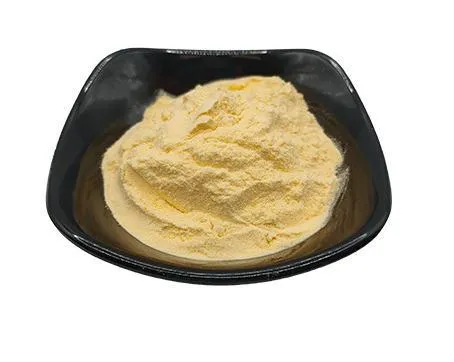 Email: sale@hebeidisha.com
Email: sale@hebeidisha.com
 Tel: +86 13315186550
Tel: +86 13315186550
- Afrikaans
- Albanian
- Amharic
- Arabic
- Armenian
- Azerbaijani
- Basque
- Belarusian
- Bengali
- Bosnian
- Bulgarian
- Catalan
- Cebuano
- China
- China (Taiwan)
- Corsican
- Croatian
- Czech
- Danish
- Dutch
- English
- Esperanto
- Estonian
- Finnish
- French
- Frisian
- Galician
- Georgian
- German
- Greek
- Gujarati
- Haitian Creole
- hausa
- hawaiian
- Hebrew
- Hindi
- Miao
- Hungarian
- Icelandic
- igbo
- Indonesian
- irish
- Italian
- Japanese
- Javanese
- Kannada
- kazakh
- Khmer
- Rwandese
- Korean
- Kurdish
- Kyrgyz
- Lao
- Latin
- Latvian
- Lithuanian
- Luxembourgish
- Macedonian
- Malgashi
- Malay
- Malayalam
- Maltese
- Maori
- Marathi
- Mongolian
- Myanmar
- Nepali
- Norwegian
- Norwegian
- Occitan
- Pashto
- Persian
- Polish
- Portuguese
- Punjabi
- Romanian
- Russian
- Samoan
- Scottish Gaelic
- Serbian
- Sesotho
- Shona
- Sindhi
- Sinhala
- Slovak
- Slovenian
- Somali
- Spanish
- Sundanese
- Swahili
- Swedish
- Tagalog
- Tajik
- Tamil
- Tatar
- Telugu
- Thai
- Turkish
- Turkmen
- Ukrainian
- Urdu
- Uighur
- Uzbek
- Vietnamese
- Welsh
- Bantu
- Yiddish
- Yoruba
- Zulu
Nov . 21, 2024 04:32 Back to list
propylene glycol and dipropylene glycol
Propylene Glycol and Dipropylene Glycol An Overview
Propylene glycol and dipropylene glycol are two important compounds widely used in various industries, including pharmaceuticals, food, cosmetics, and chemical manufacturing. Although they share a common chemical structure, their unique properties and applications set them apart.
Propylene Glycol (PG) is a synthetic organic compound classified as a diol or glycol. Its chemical formula is C3H8O2, and it is produced by the hydration of propylene oxide—a compound derived from petroleum. One of its most notable characteristics is its ability to act as a humectant, which means it helps retain moisture. This quality makes it a valuable ingredient in many skincare and cosmetic products, where it enhances texture and hydration.
In the food industry, propylene glycol is recognized as a food additive (E1520) and is deemed safe for consumption by regulatory bodies, such as the FDA
. It is often used as a solvent for food colorings and flavorings, and it plays a crucial role in the production of icy products, helping to prevent the formation of ice crystals.propylene glycol and dipropylene glycol

Dipropylene Glycol (DPG), on the other hand, is a byproduct of the production of propylene glycol. Its chemical formula is C6H14O3, and it possesses similar properties to its simpler counterpart but with different applications. DPG is less hygroscopic than propylene glycol, making it suitable for use in formulations where less moisture retention is desired.
In the fragrance industry, dipropylene glycol is commonly used as a solvent and carrier for fragrance oils. Its low volatility and viscosity help stabilize fragrances, making them last longer in personal care products. Additionally, DPG is used in inks, paints, and coatings, where it serves as a solvent and a viscosity-reducing agent.
Both propylene glycol and dipropylene glycol are generally regarded as safe when used appropriately, but consumers should still consult product labels and safety data sheets. While they are similar in structure and derived from similar sources, the choice between these compounds typically depends on the specific requirements of the application.
In conclusion, propylene glycol and dipropylene glycol are versatile compounds with a wide range of applications. Their unique properties make them indispensable in industries that prioritize moisture retention, flavor stability, and fragrance longevity. As research continues, the roles of these glycols in innovation and product development will likely expand even further, contributing to advancements across various sectors.
Latest news
-
Certifications for Vegetarian and Xanthan Gum Vegetarian
NewsJun.17,2025
-
Sustainability Trends Reshaping the SLES N70 Market
NewsJun.17,2025
-
Propylene Glycol Use in Vaccines: Balancing Function and Perception
NewsJun.17,2025
-
Petroleum Jelly in Skincare: Balancing Benefits and Backlash
NewsJun.17,2025
-
Energy Price Volatility and Ripple Effect on Caprolactam Markets
NewsJun.17,2025
-
Spectroscopic Techniques for Adipic Acid Molecular Weight
NewsJun.17,2025